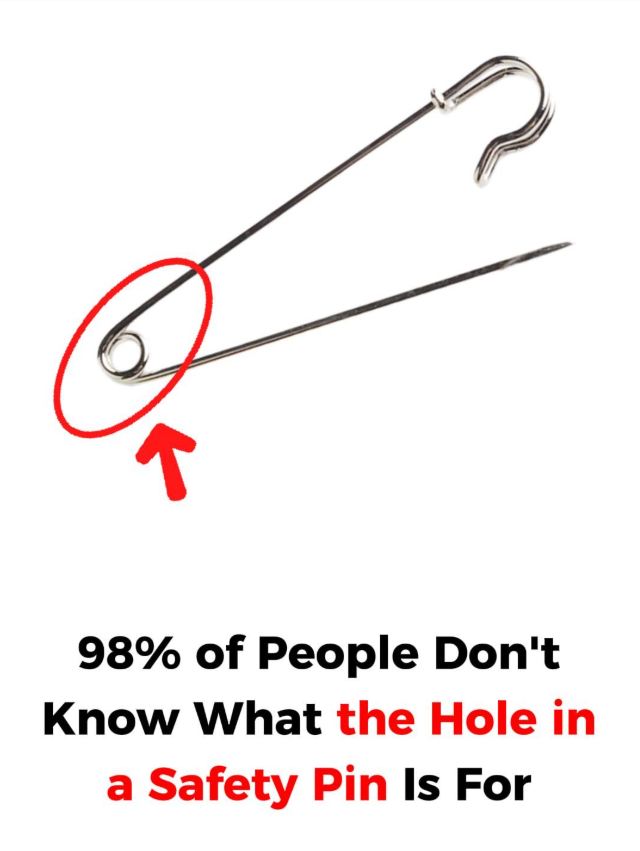🧵 Common Uses for the Hole

What’s the Purpose of That Tiny Hole in a Safety Pin? (It’s Not Just for Looks!)
Common Uses for the Hole
Tailoring & Sewing
Attach basting thread to mark hems or tucks — remove pin, leave thread behind
Crafting
Secure ribbons on gift wraps, wreaths, or DIY projects without knots
Nursing & Diaper Pins
Tie a soft ribbon through the hole for easier gripping (and safer handling)
Emergency Repairs
Thread elastic through the hole to reattach waistbands or bra straps
Event Planning
Attach name tags with ribbon instead of piercing delicate fabrics
💡 Pro Tip: Loop embroidery floss through the hole to use as a quick-sew marker — super helpful for alterations!
🛠️ Bonus Life Hacks Using the Hole
🔧 Make a Mini Keyring: Thread a thin chain or split ring through the hole to turn a safety pin into a temporary key holder.
🧵 Thread Organizer: Slide multiple pins onto a string through their holes to keep them together and easy to find.
🎨 DIY Embellishment: String beads onto thin wire, thread through the hole, and use the pin as a brooch base.
🎒 Gear Fix: Use the hole to loop cord through when repairing backpacks or tarps in a pinch.
🤔 Fun Fact: Who Invented the Safety Pin?
The modern safety pin was patented by Walter Hunt, an American inventor, in 1849. He designed it to prevent injury from open pins — and included the eyelet (the tiny hole) not just for threading, but also to make it easier to manufacture and inspect.
Hunt sold the patent for $400 — and today, billions are produced every year.
❤️ Final Thought: Small Design, Big Purpose
That tiny hole may seem insignificant, but it’s proof that even the simplest tools can be thoughtfully engineered.
So next time you reach for a safety pin, take a second to notice its clever design — because sometimes, the smallest details solve the biggest problems.
After all, great inventions aren’t always flashy.
Sometimes, they’re just… pinned perfectly. 💡💛